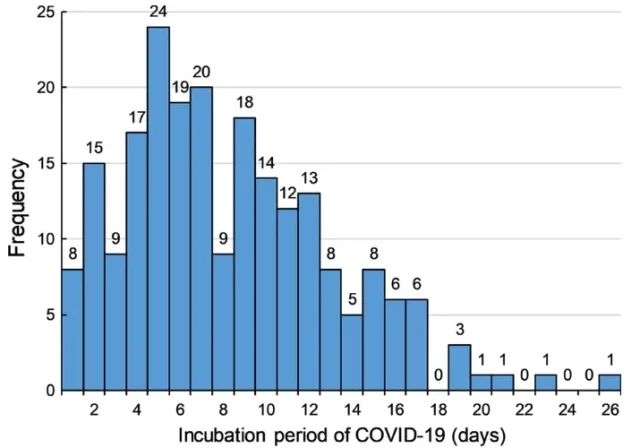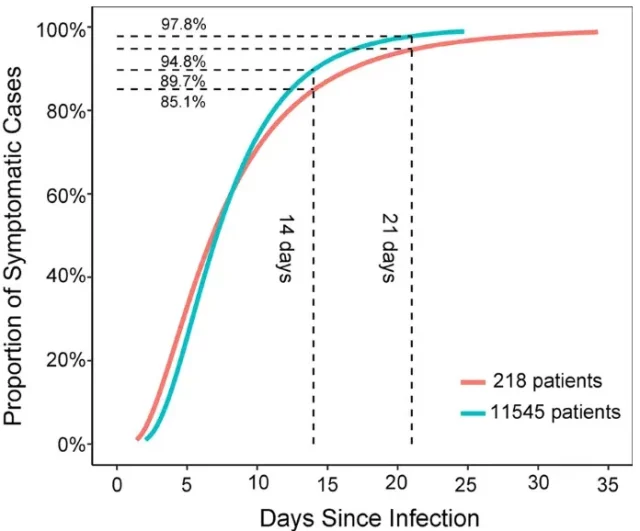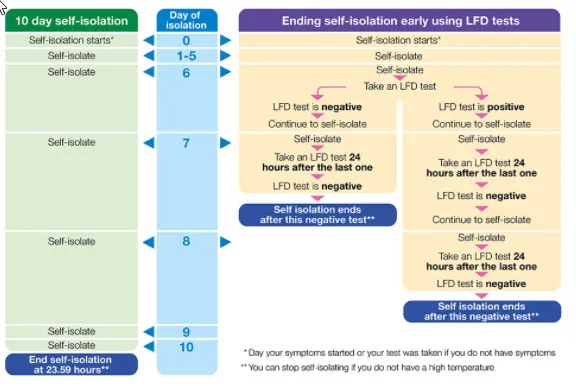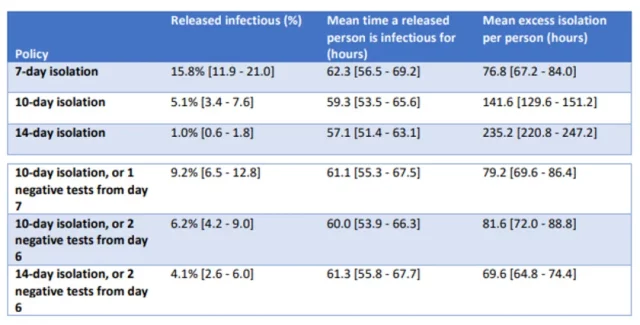Are quarantine measures for COVID still needed?
- Aspirin: Study Finds Greater Benefits for These Colorectal Cancer Patients
- Cancer Can Occur Without Genetic Mutations?
- Statins Lower Blood Lipids: How Long is a Course?
- Warning: Smartwatch Blood Sugar Measurement Deemed Dangerous
- Mifepristone: A Safe and Effective Abortion Option Amidst Controversy
- Asbestos Detected in Buildings Damaged in Ukraine: Analyzed by Japanese Company
Are quarantine measures for COVID still needed?
- Red Yeast Rice Scare Grips Japan: Over 114 Hospitalized and 5 Deaths
- Long COVID Brain Fog: Blood-Brain Barrier Damage and Persistent Inflammation
- FDA has mandated a top-level black box warning for all marketed CAR-T therapies
- Can people with high blood pressure eat peanuts?
- What is the difference between dopamine and dobutamine?
- How long can the patient live after heart stent surgery?
Are quarantine measures for COVID still needed?
The United Kingdom and the United States have shortened the COVID-19 quarantine period. What is the addition or subtraction of quarantine?
With the addition of Omicron and Delta, Europe and the United States have set new infection records during the Christmas and New Year holidays.
Preventing the spread of infectious diseases is inseparable from the quarantine of infected persons and close contacts (potentially infected persons).
However, a large number of people need to be isolated and have an impact on the normal operation of society.
In this context, the United Kingdom and the United States have successively changed the quarantine standards.
From a basic point of view, the United Kingdom changed the original 10-day quarantine to 7 days after joining the test, and the United States reduced the quarantine time to the shortest 5 days. Contrary to these policies to compress quarantine, China often “increases” quarantine due to the epidemic.
The most obvious is immigration quarantine, 14+7, 14+7+7, 21+7, etc. There are different versions in different places. In the process of adding and subtracting the quarantine time, who is right and wrong? How to look at it from a scientific and social perspective?
1. The purpose of quarantine
Before discussing the pros and cons of the length of quarantine, we must first understand the purpose of quarantine. quarantine is a restriction on the personal freedom of the quarantined person , and it is a last resort.
quarantine cannot be done for the sake of quarantine, and the quarantine time should not be based on how long it takes to reassure others, but should be based on a clear scientific and public health necessity .
The quarantine of infectious diseases is divided into two types, one is the quarantine of the diagnosed person , and the other is the quarantine of close contacts- quarantine .
Both seem to “close” people, but the reasons and specific operations are different.
Taking the COVID-19 as an example, the confirmed person is clearly aware of the infection, and the purpose of quarantining these people is to prevent the virus from spreading from them to other people .
Unlike close contacts, these people may just be infected. The primary purpose of quarantining them is to confirm whether they are infected during the quarantine period .
On this basis, if they are indeed infected, entering the confirmed quarantine stage is equivalent to blocking the further spread of the virus during the initial infection stage.
The quarantine of the confirmed case should consider how long it will be infectious after the diagnosis .
For ordinary people with a normal immune system, the COVID-19 is not a virus that can parasitize and remain infectious for a long time, so the time for a confirmed person to be infectious is limited. It is meaningless for public health to continue to isolate after the infectious period.
The quarantine of close contacts should consider how long the incubation period is from exposure to the virus to confirmed infection .
Also due to the function of the immune system, COVID-19 is not a virus that can be latent for a long time. It is also unnecessary to extend the quarantine time indefinitely and keep people “don’t go out first, and then test after two days.”
2. Reasonable quarantine time
So how long is the reasonable quarantine period? In theory, “no more, no less” is best. “Not much” means “release people” after the contagious period and the incubation period.
This is the most fair to the quarantined person, and “too many” means to “close” people for nothing.
“Not a lot” means not to release the quarantine during the infectious and incubation period, otherwise it is tantamount to creating opportunities for the spread of the virus and deviating from the purpose of public health measures.
However, the basis of the infectious period and the incubation period is the result of the interaction between the virus and the human body .
How long does it take for the virus to gain a foothold in the struggle against the human body? How long does it take for the human body to clear the virus?
All these will affect the infectious period and the incubation period, and what is finally revealed is a complex dynamic process full of individual differences .
For example, some people have an incubation period of only two days, and only two days from exposure to the virus to diagnosis. But for others, it may take two weeks from contact to diagnosis.
The infection period is also the same. Some people may kill the virus in the body within a few days and no longer excrete the live virus from the body, while others may not be able to get rid of the virus until two weeks.
Obviously, public health policies cannot achieve the optimal solution for each infected person and individual close contact .
We can only consider how long the incubation period and infectious period of most infected cases are from the general law, and set the quarantine time on this basis.
For example, in an analysis (reference 1), the incubation period (from close to onset) of 218 patients with accurate information is as follows:

It can be seen that the incubation period varies for different people, but most of them are within 14 days.
At this time, you can consider how many infections will be caught and how many will be missed if you set the quarantine and quarantine time to 14 days or more extreme 21 days , as follows (picture quoted from reference 1):

It can be seen that if the quarantine is set at 14 days, the missed “extra-long standby” cases will be at most 5-10%. Adding to 21 days will still miss 2-3% of the cases, and the actual increase is limited.
There are many similar studies on the infectious period and incubation period, and they are also the scientific basis for various health institutions, including the World Health Organization, to formulate recommendations for quarantine time.
Different countries and regions have different standards for the number of cases that are allowed to be “missed”, which also brings some policy differences.
But in general, it is common to set quarantine and quarantine at 10-14 days , and it can also catch most of the infected cases and reduce secondary transmission.
3. The idea of optimizing quarantine
Some people may say that some cases of infection or incubation period will still be missed in 14 days. The longer the time, the safer it is to be responsible to the society.
However, there is a high probability that the person who says this is not the quarantined person. Don’t forget that people who are quarantined are restricted in their personal freedom.
Whether it was infection or close contact, these quarantined people did not make a mistake. We are asking them to make sacrifices in the public interest.
The time between quarantine and quarantine requires a balance between the interests of the quarantined and the protection of public safety , and we cannot blindly ask others to make more sacrifices in pursuit of diminishing marginal benefits.
Reasonable quarantine and quarantine time should not only consider how many infected people have been missed, but also how much unnecessary quarantine time has been caused .
A major direction for optimizing quarantine time is to reduce unnecessary quarantine time without increasing the actual risk of virus spread .
A more scientific approach is to include the vaccination and test results in the consideration of the quarantine time.
Comparing Delta’s breakthrough infections in vaccinated patients with unvaccinated common infections, scientists found that the viral load of breakthrough infections declined faster, which means that people who have been vaccinated can clear the virus faster.
In this case, it is reasonable to appropriately shorten the quarantine time for breakthrough infections .
In addition, PCR detection can infer the virus load, and rapid screening based on virus protein detection also has good sensitivity during the infectious period when the virus load is high.
Adding this type of testing at an appropriate point in time can help determine whether there is a need to continue quarantine.
4. Basis for the 7-day quarantine in the UK
Based on the consideration of vaccination, the UK has shortened the quarantine or quarantine time to 7 days in some cases by adding multiple tests.
For example, for a confirmed infection, you can refer to the following picture (quoted from the UK government website, reference 2):

If the rapid antigen test (LFD) is negative for two consecutive days starting from the 6th day of quarantine, 24 hours apart, the quarantine can be lifted.
Theoretically, the quarantine will end at the earliest 7 days .
Why can this be done? Because the rapid antigen screening is more accurate when the virus load is high, that is, when the infection is strong, the original intention of isolating the infected is to prevent the spread of the virus during the infectious period, and the rapid antigen screening can just help eliminate it.
However, the detection sensitivity of fast screening is still much worse than that of PCR, and there is still a high possibility of false negatives in a single test. Two tests are done every 24 hours.
If both are negative, the two tests are inaccurate, and the possibility that the subject is still in the infectious period is extremely low.
The British Public Health Department recently uploaded a preprinted paper on simulation predictions of different quarantine policies (Reference 3). The key comparisons are as follows:

When the quarantine period for infected persons is 10 days, 5.1% of the people may still be infectious when the quarantine ends, which is directly shortened to 7 days, and this proportion rises to 15.8%.
But if you add the requirement of two consecutive quick screening negatives, the ratio is 6.2%, which is not much different from the 10-day quarantine.
The average extra quarantine time per person (the time that an individual does not actually need to be quarantined but is still detained) can be reduced from 141.6 hours to 81.6 hours after allowing the test to be released early on the 7th day .
On the premise of not increasing public health threats, based on science, reducing the sacrifices of quarantined people is the right direction .
Similarly, we know that after vaccination, a person’s risk of severe illness is much lower, which is a better protection for him personally.
The effectiveness of preventing infection has declined with the passage of vaccination time and the emergence of mutant strains, but it is still better than that of people who have not been vaccinated and streaked.
In this case, the British Public Health’s recommendation is that close contacts who are fully vaccinated are not subject to the 10-day quarantine and quarantine law, but they must be screened quickly for 7 consecutive days .
It is equivalent to knowing that you will not be in serious trouble, but you need to pass frequent tests to minimize your risk of adverse effects on others.
5. quarantine and optimization still have a long way to go
After the UK proposed that testing could be used to compress the quarantine time, the US CDC made a more radical change, reducing the time for quarantine and quarantine to 5 days, and there is no testing requirement (Reference 4). The CDC changes can be said to lack scientific basis and are extremely dangerous.
But we can also see from these different changes that there is still a long way to go to achieve truly optimized quarantine.
Although the changes in the United Kingdom basically follow the existing scientific basis, a very important motivation cannot be ignored is that Omicron has caused too many cases, and the number of close contacts has increased exponentially.
The original 10-day quarantine is implemented. Many societies are basically quarantined.
The function cannot be executed . For example, in the London area, 40% of NHS (British State-owned Medical) staff were unable to work due to quarantine or quarantine (Reference 5).
The CDC’s 5-day quarantine is also to ensure that there are enough people to maintain society. But it must be considered, why is there such a shortage of manpower due to quarantine?
The bottom line is that the number of infections is too high. Therefore , when changing the quarantine time, the impact on infected cases must still be considered .
Otherwise, the time will be reduced blindly, and the number of infected cases will continue to increase, which is tantamount to fighting a fire .
CDC’s behavior has this trend, and we will write a separate article for analysis.
A truly optimized quarantine policy must be based on more thorough research . Nowadays, the surge in infection cases in many places is caused by Omicron.
This mutant strain has a relatively short time to come out, and its incubation period and infectious period are relatively early. Only when the data is more complete can we know what kind of quarantine time is more appropriate.
This also applies to detection. Is the sensitivity of antigen detection reagents different for different mutant strains? How much is the difference? These will also affect the accuracy of pre-quarantine through detection.
Since Omicron’s immune escape is so severe, should vaccinators still enjoy the quarantine discount? If so, should the discount level be changed?
There are no absolute answers to these questions. However, as the basic policy of the COVID-19 public health, quarantine has a huge impact on each of us and the entire society.
We need to continuously optimize and adjust through research and analysis.
This article was published at the turn of 2021 and 2022. From 2020 to 2021, many people have been affected by the quarantine policy for more than two years.
We hope that as a society, we can more recognize the sacrifices and contributions of these people, and do not regard being quarantined as a matter of course, or even to blame.
Also hope that in 2022, we can optimize the time and method of quarantine based on science, technology, and control of the epidemic, so that no more people will be required to enter the quarantine in the end.
References:
1.https://idpjournal.biomedcentral.com/articles/10.1186/s40249-021-00901-9
2.https://www.gov.uk/government/publications/covid-19-stay-at-home-guidance/stay-at-home-guidance-for-households-with-possible-coronavirus-covid-19-infection
3.https://www.medrxiv.org/content/10.1101/2021.12.23.21268326v1
4.https://www.cdc.gov/media/releases/2021/s1227-quarantine-quarantine-guidance.html
5.https://www.theguardian.com/world/2021/dec/27/omicron-absences-leave-public-services-in-a-perilous-state
Are quarantine measures for COVID still needed?
(source:internet, reference only)
Disclaimer of medicaltrend.org
Important Note: The information provided is for informational purposes only and should not be considered as medical advice.



